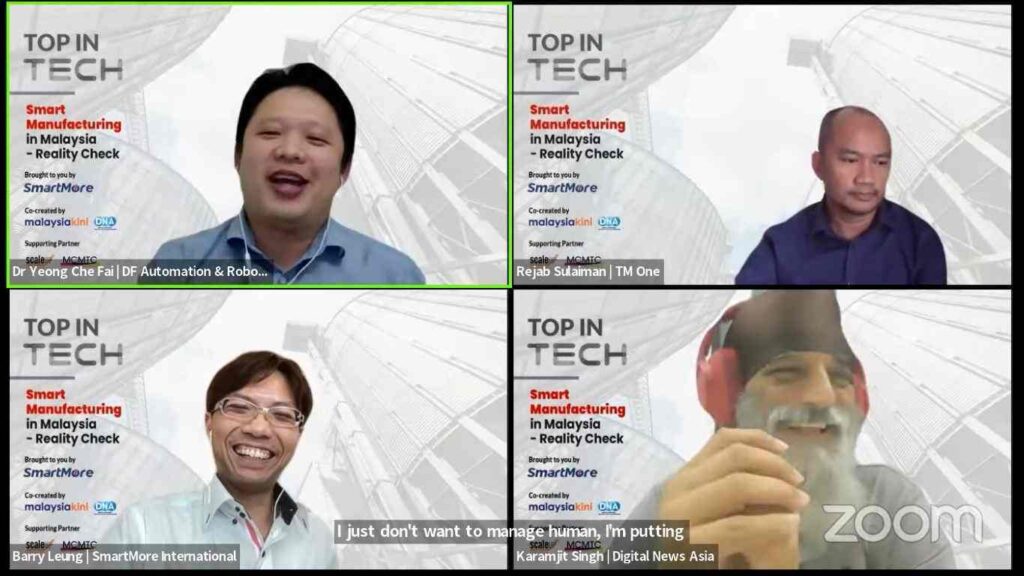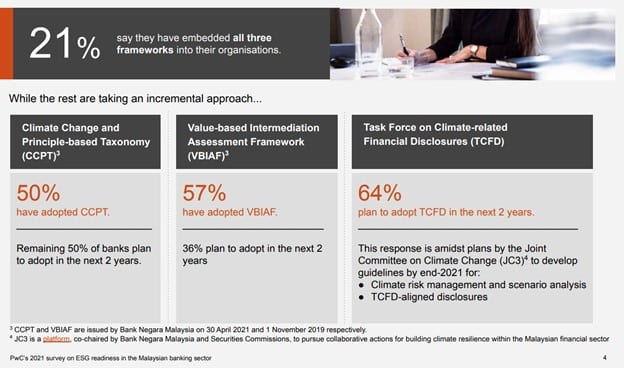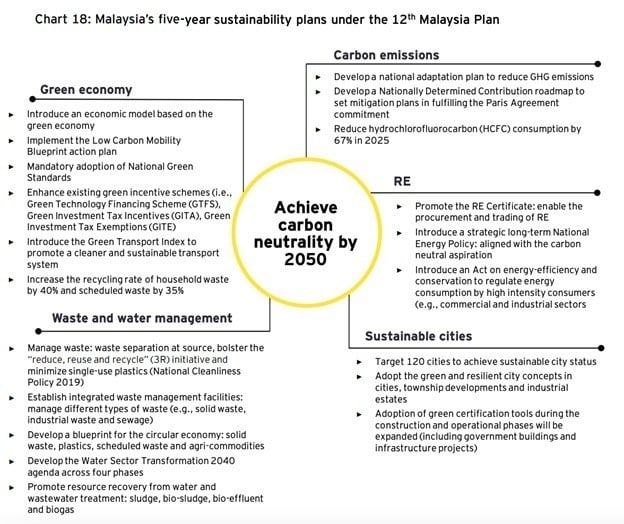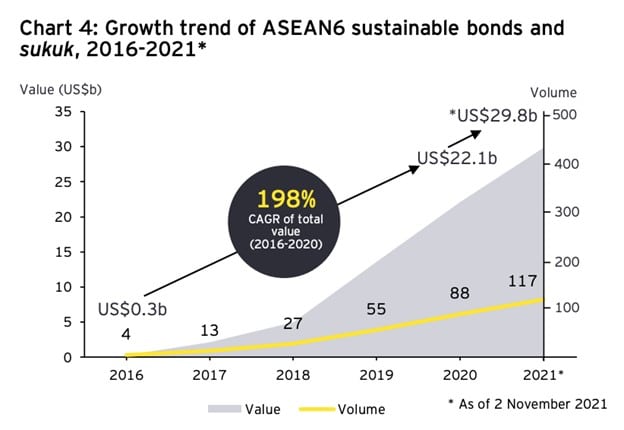

Smart cities are like the humans who live in them, behaving like complex creatures, constantly collecting and transporting information to make better sense of the world. In other words, they are alive.
And like all living things, smart cities possess DNA. In its conventional definition, DNA is biological, but in this context, the DNA of a smart city is entirely different. The engine that drives the ideal smart city lies in its’ usage of technology, designed to support and enhance the lives of the human beings living in them. Each city requires a unique arsenal of technological solutions, chosen to fulfil the specific needs of its citizens, economy and environment that contributes to the success of each smart city
While certain cities thrive on an abundance of Internet-of-Things (IoT) devices, intelligent kiosks and computers, others may prefer more minimalistic, hardware-lite designs. For devices to deliver life-improving benefits for their citizens, smart cities must have high-speed connectivity and IoT networks with sufficient coverage to penetrate all parts of the cities, including in-building areas. Also, successful smart cities usually have a platform and application layer that can conduct analytics to transform data into meaningful information, viewed in a command centre.
Similar to how human abilities can be enhanced through natural growth, self-actualisation or technological aids, smart cities have ways to boost their capabilities as well. Here are a few good places to start:
A hyper connected systems need to be in place for a smart city to meet efficiency, sustainability, productivity, and safety objectives. Reliable, high coverage, high speed and low latency connectivity networks form the foundation for almost all smart city systems and are things all smart cities need.
For example, a smart city should have a tech-based delivery infrastructure for public utilities such as water, electricity, waste, sanitation, sewerage and government services built on real-time connectivity. Connected technologies and IoT solutions that can constantly match the changing supply-demand gaps can rapidly improve living standards when integrated with existing infrastructure.
Local councils need to identify and prioritise the fundamental locations, facilities and infrastructure where they would deploy the millions of sensors and IoT devices and solutions in phases towards developing and building an action focused infrastructure framework masterplan or blueprint that would yield meaningful life impacting living and social environment to the towns and cities.
As digital and physical infrastructures increasingly converge, integrate, and interoperate, smart cities must embed the proper cybersecurity and privacy measures in each stage of development. Local councils must also sync cybersecurity strategies across smart city networks and design appropriate security and governance structures to protect their citizens.
The thousands of smart devices are double-edged swords. While they collect and feed helpful information into smart applications, they open up vulnerabilities in the more extensive IoT network. Physical tampering with smart devices can lead to backdoors and malicious implants that can potentially give unauthorised access to black-hat hackers and cyber terrorists.
In short, smart cities that thrive on the abundance of data collected by the network of sensors need to be mindful of data security. While it helps authorities monitor the health of its city, the possibility of a data breach needs mitigation to avoid crippling of city operations. Therefore, robust security policies and management is needed to ensure that governance over sensitive and personal data is practised and automatically managed across the digital, smart services and IoT solutions and systems deployed.
Even though data can be tough to handle, smart cities are valuable reservoirs of data. Effective data sharing and access to this data can unleash new opportunities to innovate and generate social and economic benefits. This practice is estimated to create the above benefits worth between 0.1% to 4.0% of GDP.
All data from devices, people, systems, and the environment go through a transformation process involving data management, integration, machine learning, and advanced analytics to become information that addresses real-time incidents and assists city planning.
One key area that benefits data analytics is the smart government component. For example, conventional government censuses are expensive to implement and often collect inaccurate data, leading to the low effectiveness of newly designed policies and initiatives. With accurate and reliable data, governments can better understand the problems, and improve policy-making abilities by solving the root causes.
Other areas of benefit include financial health, improved outcomes, operational efficiency, public engagement, crisis management and others.
Artificial intelligence (AI) is the piece of the puzzle that puts the word ‘smart’ into smart cities. By combining modern machine-learning, natural language processing (NLP), and computer vision with huge data lakes, AI is primed to drive efficiency and solve most problems local councils face.
As AI systems are fed with tons of data, the technology can identify areas of improvement and recommend an effective solution. For instance, AI-intelligent surveillance systems can provide continuous protection for citizens and effective system operations of the cities. This system uses facial and object recognition, behavioural and movement analysis algorithms and objective-detection programs to analyse live video feeds and identify potential risks or threats.
Therefore, gaining extra insights into niche aspects of a city by using AI is the natural step in the evolution of modern-day smart cities.
In Malaysia, many States have already started implementing smart city projects with the federal guidelines of Malaysia Smart City Framework, MSCF. These plans mainly revolve around transportation and cashless payments - two crucial focus in society.
Moving forward, smart city planners must adopt a systems approach, meaning that authorities need to compartmentalise the goals of adopting a smart city.
At TM One we applaud the commitments and efforts of various local smart city initiatives and we understands the enormous tasks and planning required. Our talents, partners and solutions are ready to help local governments turn their blueprints into citizen-focused action plans that will move the needle in terms of turning Malaysia into a digital-first, smart-city nation.
Five years ago, the conversation surrounding smart cities was in its infancy, with most topics revolving around demystifying the technology behind them. Today, cities around the world have moved past demystification and are taking great strides in implementation. Globally, there are several shining examples we can turn to for inspiration;
While we are witnessing the transformation of several cities worldwide, what are the required factors that make a city ‘smart’?
Developing a smart city is not a task that can be sustained with an ad-hoc approach. Instead, a holistic vision is required to steer decision-making and guide action plans toward implementing realistic solutions that deliver tangible results that can enhance the lifestyles and living quality of all citizens within the city.
The Malaysia Smart City Framework (MSCF) has offered several initiatives such as MyDigital, GTMP and JENDELA as official ‘textbook approaches’ or suggested priorities. Local councils or Pihak Berkuasa Tempatan (PBTs) can refer to these initiatives in developing the smart city vision that best fits their cities.
Behind the development of a successful smart city, lies an excellent core vision that is developed based on the citizens’ real-life experiences. The application of technology is moot if it does not bring tangible benefit to its end users.
The common occurrence of pilot projects being abandoned, with selected technologies being seriously under-utilised, is a result of decision-making without a clear understanding of the real-life pain points experienced by the end-user, the citizens themselves. For a smart city to truly elevate our lifestyles and quality of living, the solutions we choose must be people-centric and based on actual needs.
Critically, PBTs will require sufficient funding to set the ‘smart city’ ball rolling smoothly. However, based on a survey conducted during the previous TM One City Leap Summit 2020, only 2.6% of PBTs surveyed indicated that they have sufficient funds, while 42% of them responded that they required funding assistance.
While procuring sufficient funds may be an issue, we can look to Indonesia to overcome the same challenge. Under West Java’s Digital Villages Theme, the West Java Provincial Government started their digital transformation of rural fisheries by installing basic smart auto-feeders in 4289 ponds across West Java. Instead of immediately using high-end tech solutions, the deployment of basic technology allowed the fishermen to empower their own productivity, resulting in a 30 to 100% increase in earnings and effectively generating their own initial capital for more cutting-edge solutions. On top of that, there was the added benefit of increasing digital literacy among the fishermen to be more receptive to newer technological solutions.
With a vision outlined and action plans identified against the available funding, the next key factor in creating a successful smart city lies in the capabilities of the project management office to turn the vision into reality. Key traits of a great project management office are:
It takes more than a day and more than just a single person to build a smart city. In fact, stakeholder management is critical in garnering support and alignment toward the outlined vision of smart city development. Effective stakeholder management requires a deep understanding of all parties who will benefit from implementing smart cities. These benefits include more efficient public services for citizens, data-driven disaster mitigation strategies for local governments, and more diverse revenue streams for investors.
Communication and outreach are vital in building the required understanding among stakeholders. Examples of campaigns designed to encourage stakeholder involvement include PLANMalaysia’s Libat Urus Pemegang Taruh involving government agencies, stakeholders and research teams for cities such as Ipoh, Johor Bahru and the Federal Territories.
Learning from our Indonesian neighbours again, the West Java Provincial Government has taken on a ‘Pentahelix Collaboration’ model, with initiatives geared towards encouraging collaboration and participation from authoritative bodies, media bodies, businesses, academics and local communities.
Good governance is the final thread capable of tying all of the above factors together. Implementing strong top-down leadership and transparent policies can crystallise each PBTs smart city vision. Good governance can also help develop sustainable funding schemes according to each PBTs needs while delivering the talent required to project management offices. It will also support communications campaigns to encourage the stakeholder buy-in needed for successful execution.
After several years of conversation, the time is ripe for Malaysia to transform its cities. The rakyat already stands to gain much more from a smart city transformation. With the effects of climate change already rearing its ugly head at our mobility, agricultural production and air quality, Malaysia is ready to accept solutions that promise to solve day-to-day difficulties. However, the advancement of smart city technologies stands to take us even further beyond problem-fixing – smart city technology now can elevate Malaysia towards a cleaner, safer, more sustainable, higher-quality way of living.
If we take an overview of what smart manufacturing means today - it is generally described as the application of artificial intelligence (AI) and automation in manufacturing, which is targeted toward evolving the ideal factory of the future.
This is usually defined by industry commenters as an intelligent factory utilising robotics, AI, and internet of things (IoT) technologies. Actual implementation focuses on installing sensors to collect data of products and equipment at each phase of the production process.
Meanwhile, robots should work autonomously and collaboratively to achieve often complex actions. Each processing station and production can work independently or in collaboration and self-adjust procedures in synch with the intended process.
Summarised in a Deloitte report1, connectivity and convergence are the underlying themes in Industry 4.0 as applied to manufacturing systems. Ideally, 'it is a leap forward from more traditional automation to a fully connected and flexible system,' the key features of such a manufacturing system can be summarised as: responsive, adaptive, and connected.
An April 2022 release by market research firm Vantage of Smart Manufacturing Market Growth and Trends2 report expects the smart manufacturing market to reach a valuation of US$237.4 billion by 2028, driven largely by demand in the retail sector, however.
Interestingly, Asia Pacific has been singled out by the report as the fastest regional to adopt smart manufacturing. Examples include India's 'Make in India' initiative, which has zeroed in on automating in-house manufacturing facilities.
In Malaysia, the country's digital economy focus, which includes developing smart communities among many other components, is anchored to the same transformational trajectory as the rest of the world
As smart manufacturing is another important component of the nation's thrust, a recent industry forum set out to3 probe the current state of smart manufacturing in Malaysia.
Moderated by Karamjit Singh, CEO of Digital News Asia, the discussion featured industry speakers: Rejab Sulaiman, Vice President, Products & Innovation of TM One; Barry Leung, General Manager of SmartMore; and Prof Dr Yeong Che Fai, Chairman of DF Automation & Robotics.

As part of the introductory round, the panellists were asked for their opinion on where Malaysia was today as a nation on the road to Industry 4.0 maturation. On a rough scale of 0-5, the consensus was deemed to be average - 2.5. This could be related to 98% of businesses in the country being small and medium enterprises (SMEs), which could barely rate 1+, while those larger companies, already on the transformational road, were pushing 4+.
Both SmartMore's Leung Prof Dr Yeong opined that resistance to adoption could be attributed to many factors: low minimum wage rates in the country preclude the need to adopt digital (such as robotics) on a large scale; no pressure on profit margins, and also low awareness of digitalisation, especially among smaller companies.
On the positive front however, all three speakers pointed to more digital projects and a steady increase in awareness of the benefits of digitalisation in the sector.
Rejab also pointed out that due to the pandemic, manufacturing companies today said their top three (3) priorities are to build resilience for their business and operating models; to enhance operational excellence; and to automate routine human tasks.
Although digital adoption is still low; the sector is starting to actively explore these solutions.
Some of the insights from the panel were recently confirmed by reports from various analysts and commenters.
SmartMore's Leung pointed out that the technologies underlying smart manufacturing were pretty mature.
Many commenters generally agree on the key trends arising from these technologies in manufacturing. For example, a Forbes commentary cited4 together StarUs Insights5, a platform scouting startups, has put pointed to some current contributors to Industry 4.0, a few or which are quickly noted here:
These all underpin the importance of manufacturing as the core building engine of our society.
In his introductory remarks, Rejab stressed that, "Today's TM One is not just about offering digital connectivity, it's not just about fibre, it is also about wireless - both 4G and 5G: we are building the digital infrastructure foundation that we can offer all of our enterprise and government customers. These sectors range across healthcare, banking, energy, education, and others."
TM One has built a strong foundation to help industries revolutionise and reshape businesses and cities, he said, when outlining an array of technologies, expertise and relevant skills readily available to drive transformation in Malaysia's manufacturing sector from TM One.
"Digital transformation (DX) is a process of moving to a technology-enabled platform to positively change a business model while providing new revenue streams and after-sales opportunities."
With smart manufacturing, the end objective of any initiative is to bring in automation by digitalising very aspect of the touchpoints from digital supply chains, connected and highly informed customers: convergence or linking of the business imperatives with operational data.
The journey comprises connecting machines to systems, monitoring and tracking, analysing the data, applying intelligent devices towards semi-automation - which is all part of a process towards full automation of production and the digitalisation of the ecosystem: one which is aiming for 100% work efficiency.
Rejab pointed out that advanced manufacturing capabilities in Malaysia will find fresh impetus with the roll out of 5G's speed, low latency and other advantages. "Initial 5G rollouts will start with KL, Cyberjaya, Penang and so on. In terms of smart manufacturing, is expected to experience immediate impact for larger manufacturers in the beginning, especially with the use of the massive number of sensors [as in massive machine-type communications or mMTC]; time critical responses, which needs 5G specs, [as in ultra-reliable low latency communications or uRLLC]; and high capacity services [as in enhanced mobile broadband or eMBB]."
As manufacturers in some sectors are already using IoT and 5G enhanced connectivity to build more agile production - such as with automated guided vehicles (AGVs), and autonomous mobile robots (AMRs) - understanding what a smart factory is important, said Prof Dr Yeong.
UK based independent research and technology organisation, TWI Ltd (formerly the British Welding Research Association7), defines a smart factory as 'a digitised manufacturing facility that uses connected devices, machinery and production systems to continuously collect and share data. This data is then used to inform decisions to improve processes as well as address any issues that may arise.'
Since the technologies used include AI, big data analytics cloud computing and IIoT, more technical skills are needed and today's manufacturing workers need to be hired for their brains as well, traditionally - their hands.
These skills span coding to handling AI pored robots, which can all be learned by employees and students ready to develop these competences.
Initiatives from government are of course welcome to promote the skill sets needed for smart manufacturing, said Prof Dr Yeong. "From the university perspective, we can help prepare our students, encouraging them to work on projects in smart manufacturing; government encouraging projects - universities face the challenge of providing a foundation as the scope demanded by industry is too vast."
Around the world, commenters have8 noted increasing government support for smart computing, which includes investing in IoT and industrial 3D printing research and development for IoT.
Malaysia too is rolling out initiatives such as the country’s Industry4WRD policy9.
Furthermore, although low adoption has been linked to smaller concerns, Rejab in response to a question about using smart manufacturing solutions in kampung or rural based businesses (sometimes called cottage industries in some western parts ) pointed out that: "Smart manufacturing is not just about robotics; it is about putting together solutions that are appropriate to your factory. Businesses can install IoT sensors into your plant operations, and collect insights for dashboard reporting. There are many uses for these solutions because the core lies in the use of sensors throughout your chain and the use of data from it."
The encroaching reality is that more and more companies are facing the problems of costs, and will realise it is time to adopt smart solutions, said Prof Dr Yeong, adding that adoption levels are also aligned to raising the level of awareness, and further government encouragement will help accelerate digital adoption.
Echoing two themes noted by industry watchers, the panel agreed that trust and confidence will be needed to build awareness and dispel much of the uncertainties arising from the pandemic era
Another is to refresh scenario planning to offset future disruptions in the industry, a process explored by TM One during one of its leadership events, LEAP 202010.
Coupled with selecting the right solutions, building deeper partnerships between manufacturers and customers are important parts of transformation, affirmed TM One's Rejab, who later added: "The next few years will indeed the most important ones for Malaysia's manufacturing, warehousing and associated industries to build for sustainable growth and generate value in the digital arena."
This article first appeared in Disruptive News Asia11
1 The Smart Factory - Deloitte Report —
https://www2.deloitte.com/content/dam/insights/us/articles/4051_The-smart-factory/DUP_The-smart-factory.pdf
2 Global Smart Manufacturing Market | Vantage Market Research — https://www.vantagemarketresearch.com/press-release/smart-manufacturing-market-149600
3 Top In Tech Series - EP23: Smart Manufacturing in Malaysia - Reality Check - YouTube — https://www.youtube.com/watch?v=HhYWOgKD-BA
4 The 10 Biggest Future Trends In Manufacturing — https://www.forbes.com/sites/bernardmarr/2022/01/25/the-10-biggest-future-trends-in-manufacturing/?sh=4eb91ffd4d56
5 Top 10 Manufacturing Trends & Innovations for 2022 | StartUs Insights — https://www.startus-insights.com/innovators-guide/manufacturing-trends-innovation/
6 7 Amazing Examples of Digital Twin Technology In Practice | Bernard Marr — https://bernardmarr.com/7-amazing-examples-of-digital-twin-technology-in-practice/
7 What is a Smart Factory? (A Complete Guide) - TWI — https://www.twi-global.com/technical-knowledge/faqs/what-is-a-smart-factory
8 Top 10 Smart Manufacturing Trends for 2022 | ATS — https://www.advancedtech.com/blog/smart-manufacturing-trends/
9 Industry4WRD Readiness Assessment | Official Website of Malaysia Productivity Corporation — https://www.mpc.gov.my/industry4wrd/
10 Jumpstarting Malaysia's digital economy with scenario planning — https://disruptive.asia/jumpstarting-malaysias-digital-economy-with-scenario-planning/
11 Making Smart Manufacturing Real in Malaysia - https://disruptive.asia/making-smart-manufacturing-real-in-malaysia/
Over the last two years, many brands accelerated their digital transformation to meet customers online. Customers quickly embraced the speed, convenience, and safety of digital experiences. However, digital alone is no longer enough. Emerging from the pandemic, consumers are now craving human interactions and a hybrid of both digital and in person experiences has gained momentum.
For these experiences to be meaningful to the customer requires a new level of customer obsession and a seamless, connected customer experience across all channels.
Jazlan Azizy Jusoh, Head of Business Services, TM One at Telekom Malaysia recently spoke about the expectations of today’s customers, and how creating a coherent digital experience can help brands to deliver this level of customer obsession. Jazlan says this begins with adopting more customer-centric processes.
“Thinking from the customer’s perspective is key. We must focus on what matters more to customers, instead of just what matters to us,” he says. “Put the customer at the centre, and design the right data architecture around the customer to build a 360-degree view.”
Read the full article here to learn more about how innovative technology is helping organisations meet the challenges of connecting with, and satisfying, customers across multiple channels.
Keselamatan siber adalah antara cabaran utama masa kini buat setiap organisasi di era digital. Pendekatan dan solusi yang melangkaui aspek perlindungan perlu diperhalusi untuk mengekalkan kesinambungan perniagaan setiap organisasi.
Laporan global pertengahan tahun 2021 daripada pakar keselamatan siber yang berpangkalan di United Kingdom – Acronis, menunjukkan bahawa kos purata pelanggaran/kebocoran data dan maklumat adalah sekitar AS$3.56 juta. Purata bayaran perisian tebusan (ransomware) pula meningkat sebanyak 33 peratus kepada lebih daripada AS$100,000.
Menurut ulasan dari pakar keselamatan siber dari TM One - cabang perusahaan dan sektor awam Telekom Malaysia Berhad (TM), COVID-19 telah mendedahkan syarikat dan organisasi kepada lebih banyak ancaman pencerobohan pangkalan maklumat. Persoalan tentang serangan siber kini telah menjadi ‘bila’ ianyanya akan berlaku dan bukan lagi ‘jika’ ia akan berlaku. Walaupun pelbagai langkah telah di ambil, kebanyakan organisasi masih berisiko dan terdedah kepada serangan.
Tahukah Anda?
| 50% daripada data Kerajaan yang menjadi sasaran, berpotensi untuk digodam, dengan akses kepada data melalui API. | 3 Ancaman Utama keselamatan ICT terhadap pusat data sektor awam Malaysia: 1. Ancaman Teknikal 2.Perisian Perisik dan Phishing 3. Kejuruteraan Sosial Sumber: Researchgate | 152,653 Jumlah insiden Botnet Drones dan Malware dilaporkan di bawah MyCert pada Mac 2022. Sumber: MyCERT |
Dengan tumpuan untuk menyelami bagaimana sektor awam dan swasta boleh mengukuhkan tahap kesiapsiagaan keselamatan siber mereka, ramai pakar dari pelbagai bidang berkongsi pelbagai pandangan, pengalaman, dan pendekatan secara terbuka. Konsensus umum mendapati isu persekitaran IT yang kompleks adalah cabaran utama terhadap pelaksanaan keselamatan siber yang efektif.
Berikut adalah tiga kunci kritikal untuk menentang ancaman keselamatan siber:

Gabungan teknologi blockchain dan kaedah biometrik menawarkan solusi yang lebih mantap dan selamat untuk mengesahkan identiti pengguna.
Pandemik COVID-19 telah memaksa lebih banyak organisasi mencari penyelesaian untuk membolehkan akses dari jauh (remote) kepada sistem. Memandangkan trend ini dijangka berterusan, pengesahan identiti pengguna adalah amat penting untuk keselamatan organisasi dan untuk memacu operasi yang lancar.
Sistem blockchain membenarkan data disimpan secara kolektif, yang menghalang sebarang gangguan/godaman. Pengguna boleh mendaftarkan butiran identiti mereka ke dalam sistem ini, dan organisasi keselamatan siber atau penyedia perkhidmatan seperti TM One kemudiannya akan memastikan ia tidak dapat ditembusi oleh penggodam.
TM One menawarkan penyelesaian Pengesahan Blockchain Terjamin (Blockchain Secure Authentication – BSA). Penyelesaian ini adalah sebahagian daripada tonggak Pusat Pertahanan Siber (CYDEC) yang fokus kepada perlindungan identiti digital. Ia adalah teknologi pengesahan tanpa kata laluan untuk mengelakkan serangan kelayakan (credential attacks), dimana penjenayah siber memintas langkah keselamatan organisasi dan mencuri data sulit. Langkah keselamatan melalui penyelesaian ini amat diperlukan terutamanya dalam sektor-sektor yang menyimpan data-data sulit dan peribadi pelanggan mereka seperti sektor Perbankan, Perkhidmatan Kewangan dan Insurans (BFSI), Sektor Kesihatan, Perkhidmatan Media Sosial dan Sektor Runcit.
Pengesahan blockchain adalah selamat, malah lebih pantas, dimana pengesahan pengguna boleh dilakukan dalam masa kurang daripada tiga saat. Penggabungan dengan sistem biometrik pula akan membolehkan proses pengesahan tanpa kata laluan sepenuhnya untuk pekerja sesebuah organisasi.
Teknologi biometrik, seperti sistem pengecaman muka, tidak memerlukan pengguna menghafal kata laluan. Terdapat banyak kes yang melaporkan penggodam mengakses dan mencuri kata laluan, dan pengesahan biometrik boleh membantu mengelakkan perkara ini.
Automasi sistem keselamatan siber membolehkan pasukan IT mengoptimumkan sumber sambil mengurangkan kesilapan manusia dalam tindak balas keselamatan.
Automasi ini juga dapat memberi faedah yang melangkaui aspek keselamatan siber. Aplikasi peranti mudah alih, Internet Benda (IoT), Kecerdasan Buatan (AI) dan automasi boleh digunakan untuk menggantikan tugas manual yang berulang sebagai sebahagian daripada usaha transformasi digital kerajaan dalam menyediakan perkhidmatan yang efektif dan selamat kepada rakyat.
Sebagai contoh, keselamatan pengumpulan maklumat sulit dan peribadi yang besar dalam sektor kesihatan melalui aplikasi yang membantu meningkatkan usaha pengendalian wabak. Inisiatif transformasi digital seperti ini akan membantu mengurus aliran data dan maklumat yang sulit dengan lebih baik tetapi ianya perlu dilakukan dengan menjadikan perlindungan privasi dan keselamatan data dan maklumat sebagai keutamaan.

Banyak perniagaan tidak mempunyai peralatan dan kemahiran yang diperlukan untuk melindungi mereka daripada ancaman siber yang sangat kompleks dan sentiasa berubah dengan pantas. Sehubungan dengan ini, pilihan untuk bekerjasama dengan rakan kongsi keselamatan menjadi salah satu penyelesaian utama. TM One menawarkan perkhidmatan langganan yang merangkumi penyelesaian bertaraf dunia untuk membantu meningkatkan kemahiran pasukan keselamatan dalaman sesebuah syarikat atau organisasi.
Pasukan perkhidmatan profesional keselamatan siber TM One terdiri daripada arkitek, perunding dan penganalisa keselamatan. Arkitek memberi tumpuan terhadap reka bentuk sistem keselamatan, yang di bantu oleh pakar perunding. Sementara itu, penganalisa keselamatan akan memberikan maklumat operasi keselamatan dengan menilai ancaman secara berterusan.
Portfolio keselamatan siber bertaraf dunia TM One menyediakan pelbagai penyelesaian untuk melindungi sistem daripada ancaman siber masa kini. Malah, TM One telah menandatangani perjanjian dengan firma komunikasi global Telefonica untuk memperkukuhkan penyelesaian infrastruktur digitalnya dan menentang ancaman siber secara global. Kepakaran kedua-dua syarikat ini akan memberi organisasi di Malaysia penyelesaian keselamatan siber yang kukuh dan berdaya tahan siber yang tinggi.
Kesinambungan kesemua ekosistem keselamatan digital perlu dilakukan secara holistik. Dalam persekitaran yang sangat mencabar hari ini, kolaborasi dalam menangani keselamatan siber menjadi keperluan asas untuk membantu organisasi dalam kesiapsiagaan keselamatan siber mereka dengan lebih baik.
TM One akan terus memainkan peranan penting dalam membantu organisasi memperkukuh keselamatan siber mereka dan mengurangkan risiko serangan siber.
Adakah anda tahu apakah sumber utama risiko siber di Malaysia? Klik pautan untuk memuat turun maklumat grafik megenai risiko siber utama di Malaysia.
Artikel ini telah diterbitkan oleh Berita Harian pada 23 Jun 2022.
In Malaysia, banks are stepping up in their journey into more sustainable financing and operating practices, making efforts to integrate environmental, social and corporate governance (ESG) considerations into their governance, business strategy, operations and risks management.
Consulting firm PwC conducted a survey last year to gauge the Malaysian banking sector’s readiness for ESG. Results from the study were released recently and showed that financial institutions in the country have woken up to the ESG imperative, with most sharing concerns about climate change, environmental and social risks.
Of the 14 Malaysian banks polled, 90% indicated having assigned a department to operationalize ESG, showcasing that Malaysian banks are making progress in establishing governance and oversight over ESG risks.
In addition, 21% of respondents said they have already embedded three ESG-related frameworks within their organization, namely the Climate Change and Principle-based Taxonomy (CCPT), the Value-based Intermediation Financing and Investment Impact Assessment Framework (VBIAF), and the Task Force on Climate-related Financial Disclosures (TCFD).

Results from the 2021 PwC survey echo those of a study conducted the same year by Malaysia’s Joint Committee on Climate Change (JC3). Formed in 2019, JC3 is a committee co-chaired by representatives from the Bank Negara Malaysia (BNM) and the Securities Commission Malaysia (SC) that focuses on building climate resilience within the Malaysia financial sector.
The study, released in April 2022, shares findings from a survey of 24 respondents in the banking, finance and insurance sectors, and found strong commitments from Malaysian financial institutions on sustainability and climate issues.
92% of respondents indicated having a sustainability strategy in place, and 73% of banking respondents said they have made some commitments to ban or phase out financing of coal-related activities.
In the banking sector, Hong Leong Bank has been praised for being among the industry’s leaders in ESG standards, recognized by a 2021 CGS-CIMB Research paper for its efforts in promoting ESG practices across its operations, working with its borrowers to improve standards, incorporating ESG evaluation in its loan approval process, and practicing disclosure of ESG-related information.
Within the telecommunications sector, CGS-CIMB Securities has ranked Telekom Malaysia (TM) highly from an ESG perspective, highlighting the telco’s ability to consistently meet the regulator’s quality of service (QoS), key performance indicators (KPIs), relatively lower regulatory risks compared to other mobile telco players, and continuous effort to implement a robust cybersecurity framework.
TM announced earlier this year that it had implemented the use of renewable energy to power its data centres, becoming the first company in the country to do so. Two of its data centres, namely the Klang Valley Core Data Centre (KVDC) in Cyberjaya and Iskandar Puteri Core Data Centre (IPDC) in Johor Bahru have secured the Green Electricity Tariff (GET) from Tenaga Nasional Berhad (TNB), as well as Green Building Index (GBI) and Leadership in Energy and Environmental Design (LEED) certifications.
Further showcasing its commitment to sustainability, TM, together with Yayasan Sukarelawan Siswa (YSS) and 18 partners comprising local councils, institutions and universities, recently collaborated to plant 5,017 Gutta Percha trees (instrumental in the early beginnings of the global submarine telegraph network) at 23 locations all over Malaysia.
Members of the public will also have the opportunity to contribute as TM launched its Adopt-A-Tree campaign where customers can adopt a Gutta Percha tree which will be planted within the 23 unifi Green Zones.
In the long term, TM aims to cut down carbon emissions by 30% in 2024, 45% by 2030 and achieve Net-Zero emission by 2050.
The company is also aiming to provide high-access Internet to at least 70% of premises nationwide and has committed to having a minimum of 30% representation of women on its board of directors and in management.
Progress observed among Malaysian firms in integrating ESG considerations comes on the back of an ongoing push by the government to advance sustainability, as well as strengthen security, wellbeing, and inclusivity.
The five-year 12th Malaysia Plan (12MP) development plan, introduced by the government back in September 2021, aims to achieve economic growth and transform Malaysia into “a prosperous, inclusive and sustainable country.”
Goals include achieving carbon neutrality by 2050, increasing the total installed capacity of renewable energy, enhancing green financing and incentives, and promoting the circular economy.

In the financial sector, the industry is guided by the respective blueprints and masterplans released by the regulators to address sustainability and climate issues.
In September 2021, the SC launched the Capital Market Masterplan 3 (CMP3), which serves as a strategic framework for the capital market to continue to support the economy and transition towards greater inclusivity and sustainability.
And earlier this year, BNM released the Financial Sector Blueprint 2022-2026, outlining the central bank’s development priorities for the financial sector over the next five years, anchored on efforts to foster market dynamism, support sustainable development objectives, and facilitate an orderly transition to greener, more climate-resilient economy and financial sector.
The rise in importance of ESG standards comes as consumers are growing more concerned about the environment and demand institutions to behave in ways that align with what they believe is socially responsible.
PwC, which polled 5,005 consumers, 2,510 employees, and 1,257 business leaders in the US, Brazil, the UK, Germany and India last year, found that 83% of consumers believe companies should be actively involved in creating ESG best practices. More significantly, 76% of consumers said they would discontinue relationships with organizations that treated employees, communities, or the environment poorly.
In Southeast Asia, this trend is evidenced by the surge in sustainable investing. Between 2016 and 2020, the issuance of sustainable bonds and sukuk, or bond-like instruments used in Islamic finance, grew exponentially at a compound annual growth rate (CAGR) of 198% in ASEAN, reaching US$22.1 billion in 2020, a 2022 report by EY shows. Total ASEAN sustainable bonds and sukuk issued is projected to amount to US$29.8 billion in 2021.

This article was first published by FinTech News Malaysia